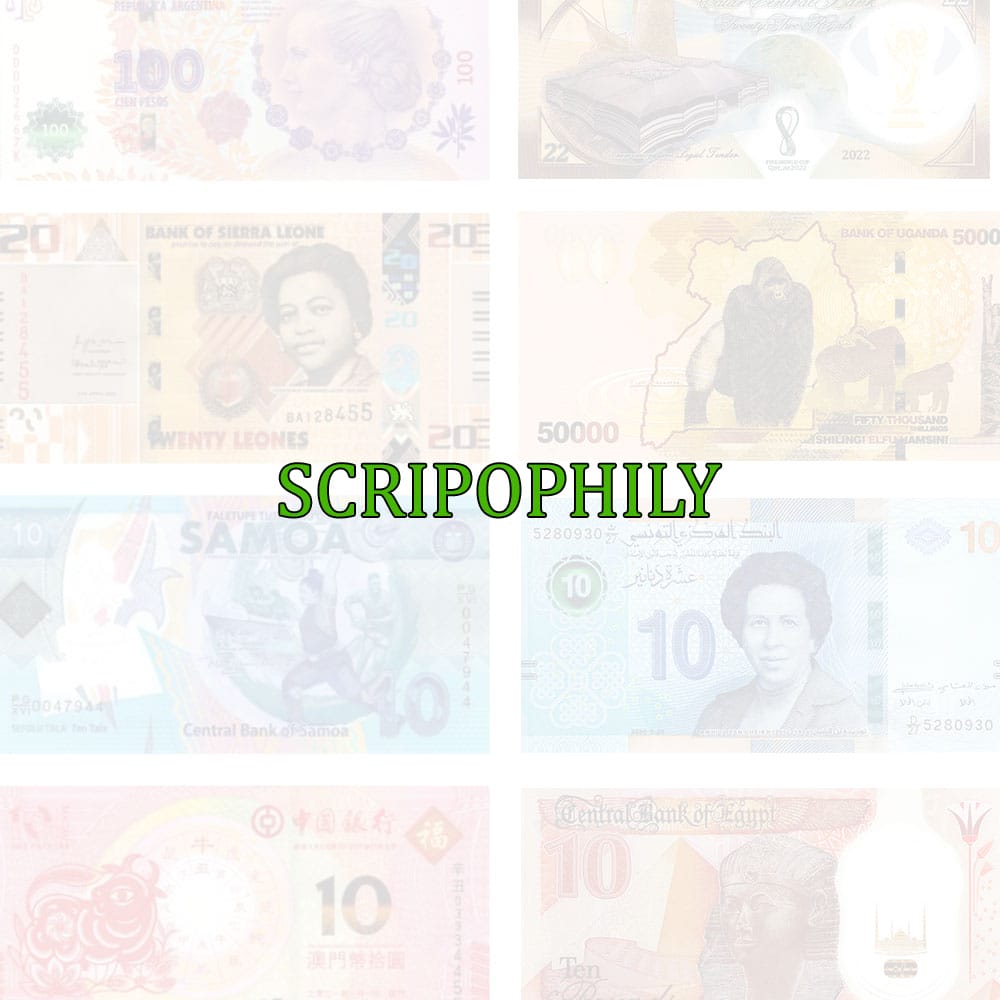Dating
Dating is the process of identifying the banknote by its print run year. Countries of the world, use different calendar systems from others, it is not universal, but have some commonalities. In the Western part of the world, and most of Europe use the Gregorian calendar. Below is a table of the different type of calendars, used when calculating the print year of the banknote.
| Name | Type | Months in a year | Days in a year |
|---|---|---|---|
| Gregorian | Solar | 12 | 365 or 366 |
| Julian | Solar | 12 | 365 or 366 |
| Hebrew | Solar and Lunar | 12 or 13 | 353, 355, 383 or 385 |
| Coptic and Ethiopian | Solar | 13 | 365 or 366 |
| Islamic | Lunar | 12 | 354 or 355 |
| Persian | Solar | 12 | 365 or 366 |
| Baha’i | Solar | 12 | 365 or 366 |
The most recognized numbering system used in banknotes are, the 0, 1, 2, 3, 4, 5, 6, 7, 8, 9
that was adopted by the Western world and in Europe.
For Arabic speaking countries, the identification of numbers into western world numbers can be difficult, specially if you’re not familiar with the language itself. There are some instances, of placing the year, of the banknote printed, an others placing the full date of print, the latter can be challenging to interpret. Below are two examples, of Arabic numerals placed in dates.
ARABIC NUMBERS IN BANKNOTES SAMPLE 1
ARABIC NUMBERS IN BANKNOTES SAMPLE 2
Below is a table of Arabic numeral characters, to help identify the dates in banknotes. When it comes to dating a banknote from Arabic speaking countries, the writing is from left to right.
[label type=”catalog”]TABLE OF ARABIC NUMERALS[/label]
| Arabic Numeral | English Numeral |
|---|---|
| ٠ | 0 |
| ١ | 1 |
| ٢ | 2 |
| ٣ | 3 |
| ٤ | 4 |
| ٥ | 5 |
| ٦ | 6 |
| ٧ | 7 |
| ٨ | 8 |
| ٩ | 9 |
| ١٠ | 10 |








